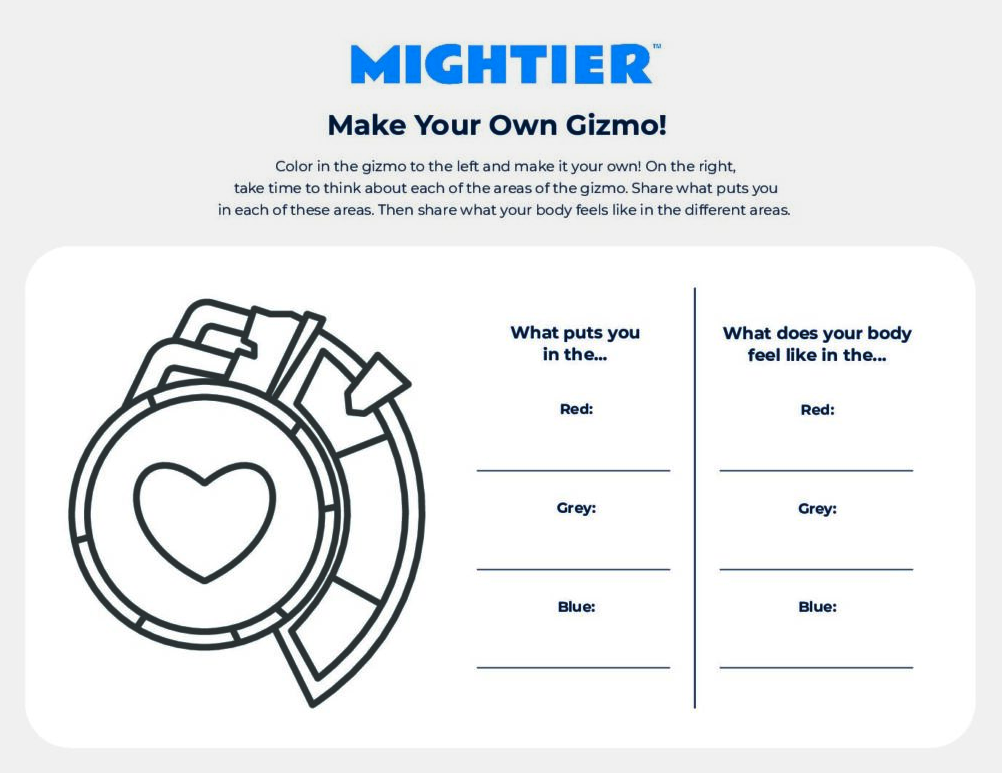- 15 to 20 minutes
- In person
- Teletherapy

Overview
This creative activity provides clients with an opportunity to choose which calming skills work best for them while having an opportunity to create a visual that can serve as a reminder for skills that work best for them.
Time in Mightier program
Weeks 1+
Therapeutic Goals
- Provide psychoeducation regarding coping skills
- Develop implicit and explicit coping skills
- Practice self-reflection
Documentation Suggestion
Client and clinician engaged in a psychoeducational intervention that helped the client explore a variety of coping skills that could be helpful for them using Mightier biofeedback tool’s language. This intervention helped to develop implicit and explicit coping skills as well as practice self-reflection.
Step-by-step instructions
- Ask your client what they have noticed as a helpful way to get back down to the blue in Mightier. They may mention Mightier coping skills or others.
- Provide psychoeducation around coping skills and how they work using the script below (or something similar).
I can tell you have been working hard to learn skills that bring your heart rate down, that is great! There are many different coping skills that help people to calm down in real life and that help to bring kids back down to the blue in Mightier. There is no “right” coping skill, everyone is different, and finding what works for you best is important! - Share the coping skill cards print out with the client and cut the cards out together. (To speed this up you can also pre-cut the cards prior to the session.)
- While the client is cutting out the cards, ask them to sort the cards into 3 piles: What skills they know are helpful for them, skills they want to try, and skills they know are not helpful for them.
- After sorting the cards, have the client try out the skills in the “skills they want to try” pile.
(If equipment is available- the client can use their heart rate monitor and Mightier tablet to track their heart rate while they use the skills or they can try them independently.)
Use the below questions (or something similar) to explore the skill with the client. (You can also do the skills with the client to help with adherence.)
-How did it feel to use the skill?
-What did you notice about your heart rate?
-What did you like about using this skill?
-What did you not like about using this skill? - Once a client has identified skills that are helpful for them, have them create a place to store the coping skills (this can be a decorated box, bag, or another container). Talk with them about how this container and cards can serve as a reminder to help the client access these skills when needed. Talk with the client about when they may use the cards, where they may store the container, and how they might feel using the cards.













